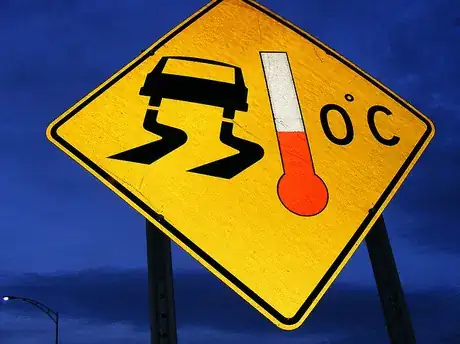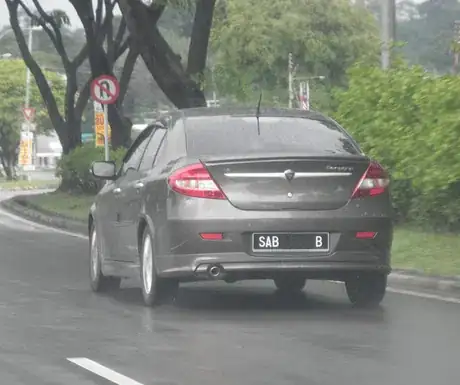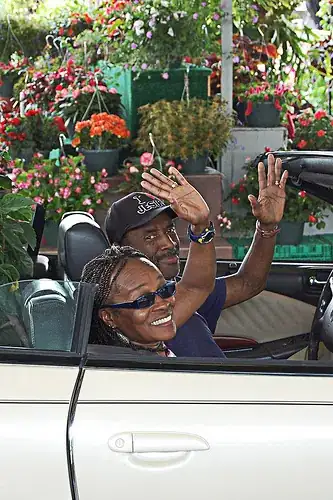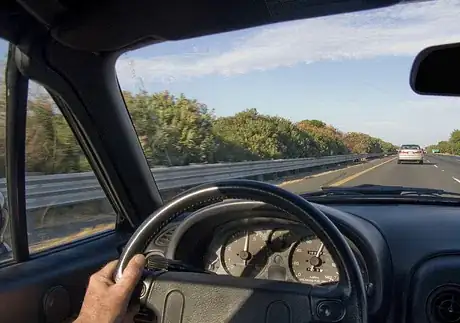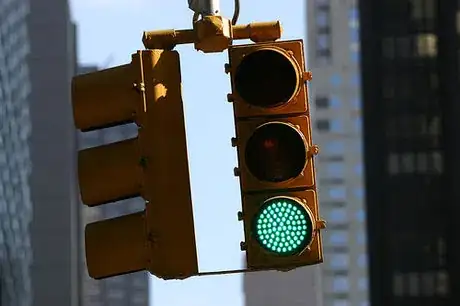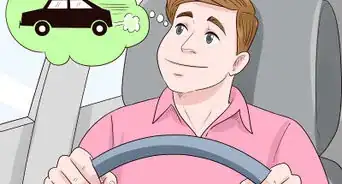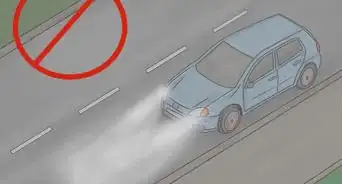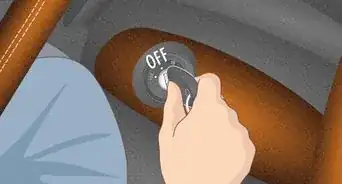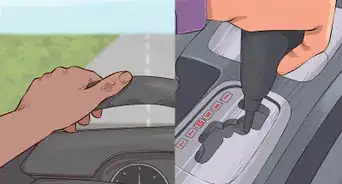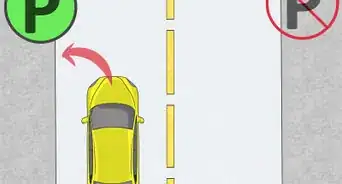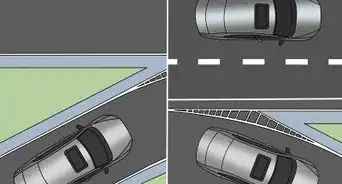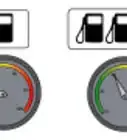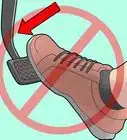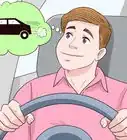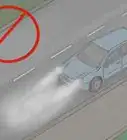X
This article was co-authored by Simon Miyerov. Simon Miyerov is the President and Driving Instructor for Drive Rite Academy, a driving academy based out of New York City. Simon has over 8 years of driving instruction experience. His mission is to ensure the safety of everyday drivers and continue to make New York a safer and efficient driving environment.
This article has been viewed 91,913 times.
Even mild-mannered individuals often seem to give in to impatience or absent-minded speediness when behind the wheel of an automobile. If you've decided to drive more slowly, whether for road conditions, enforcement, safety in general, or for better fuel economy, here is how to go about it.
Steps
-
1Allow ample time to get where you are going. Forget preparation time (getting your coat, defrosting your windows, forgetting your kids' favorite toys), driving time, or the potential for traffic or parking difficulties. If punctuality is critical, aim to arrive ten to fifteen minutes early, or more. This extra time will allow for unforeseen circumstances, and if you do arrive early, it will give you time to collect yourself and your belongings before proceeding.
- Only drive as fast as you're comfortable going.
-
2Assess conditions that might make faster driving hazardous. Driving slowly makes it easier to stop if roads are slippery, and gives you more response time if visibility is reduced. Think about the many times a person involved in an accident mentions that they were "doing the speed limit" as if that should have prevented it. The reality is that the speed limit is a guide for normal conditions (and mandatory maximum), and does not account for less safe driving conditions. Some of the less safe driving conditions to keep in mind as a genuine safety reason to slow down include:
- Ice or snow – sliding along the road, slipping over edges, and spinning out of control are some of the risks with not slowing down for snow and ice conditions.
- Rain – hydroplaning is a real risk when the rain is heavy and relentless; visibility is also greatly reduced. Another issue is washouts on the road, which can happen suddenly without warning, as well as landslides.
- Fog or mist – when there is thick fog, mist, or low cloud about, visibility is reduced and in some cases severely limited. It is not possible to tell whether an animal might be on the road, or even traffic in the wrong lane, so slowing down makes good sense.
- Darkness – without good night vision, humans have difficulty driving well at night. Fatigue and reduced perception also impact night driving, making it much safer to slow down when night driving, especially over long distances.
- Wet roadways – even if it's not raining, water across a road can spell trouble. In times of flooding, you are advised to not even attempt to use a road that is suffering from floods as the waters will often be stronger than your car. It only takes 50 centimeters (19.7 in) of water to lift an all wheel drive and carry it along flood waters.
- High winds – cars can drift or shake under the force of high winds, and steering can become difficult. It is even harder if you have a load above or behind the vehicle, and the higher your vehicle sits, the more buffeting the wind will cause.
- Winding roads – tight bends can be difficult to execute well unless you slow down; speed can cause you to miss the bend altogether and fly over the road to the other side, and even down a cliff if you're traveling through hills or mountains.
- Blind corners – these are corners where you're not able to see oncoming traffic; whenever you cannot see what's coming, it's a good idea to slow down, especially since some people make rash decisions about overtaking even though they cannot see you coming the other way.
Advertisement -
3Practice accelerating and decelerating gently and gradually. Press the pedal lightly and your moves will be gradual. This will save on fuel, improve traction in slippery conditions, and help you maintain a slower overall speed.
- Except in poor driving conditions, do not accelerate very slowly – keep up with traffic overall, at least the slower or more carefully driven vehicles like trucks and minivans. Accelerating too slowly leaves you in potentially dangerous areas such as intersections for periods unexpectedly long to others, can cause dangerous speed mismatches in merges, and can otherwise interfere with traffic patterns.
- Braking gently saves wear on the brakes and it is less likely to cause you to skid. To brake gently, leave additional space between you and the car in front of you, and anticipate upcoming braking, such as corners, stoplights, and slow traffic ahead. Driving slowly helps maintain that space and gives you more time to react.
-
4Be patient. It's neither a race nor a time for zoning out. The objective is to get where you are going safely, staying alert and in control.
- If you feel as though driving is a waste of time and you find yourself speeding just because you want to get the drive over with, see if you can reduce your commute (try driving earlier or later than usual when traffic lessens), or take public transportation, or even telecommute. If these are not realistic options, consider use the time to do something else, such as listening to an audio book, learning a new language, or catching up on the news and current affairs by radio.
-
5Drive the speed of traffic, provided it is safe for conditions. As noted earlier, the speed limits themselves do not indicate the perfect speed for poor conditions and you'll need to use your common sense for that. However, if the traffic speed is reasonable and is setting a comfortable pace, this can be a soothing and safe speed for driving and can help remove your desire to drive too fast.
- If your speed tends to inch up when you're not paying attention, follow behind someone who is going a suitable, even speed. Keep a generous, constant distance. Or use cruise control if it's safe to do so (do not use cruise control on windy roads).
-
6Give others the space to pass. If the road you're traveling has more than one lane in each direction, be courteous and use the lane going closest to your speed. If a narrower road has turnouts, use them to let anyone traveling faster behind you pass. You'll know because they'll be almost tailgating you!
- If a narrow road does not have turnouts, find somewhere safe to stop, perhaps every fifteen to thirty minutes, to allow other cars to pass if you're driving very slowly or many vehicles are accumulating behind you.
-
7Use lower gears and let the engine slow the car when descending longer hills. This is easier on your brakes and it gives you more control.
-
8Work on keeping an even, moderate speed on freeways.
-
9Time traffic lights correctly. A series of traffic lights, such as on a city street, is generally timed so that a batch of cars can travel through at about the speed limit. The best way to drive through these, where your abilities and traffic allow, is to accelerate promptly from any stop to the speed limit and to continue at that speed–no faster.
Advertisement
Community Q&A
-
QuestionTo slow the car, do you need to apply full clutch?
 Community AnswerOnly if it's a manual transmission.
Community AnswerOnly if it's a manual transmission. -
QuestionIntercity four-lane roads are 45 MPH around here. However, most folks are driving 55 MPH or more. What suggestions do you have to enforce speed limits?
 Julian ReevesCommunity AnswerAs a driver, it is not your job to enforce speed limits. Drive in the right hand lane at a speed with which you are comfortable. If someone tailgates you, slow down slowly to encourage them to go around you. You are responsible for driving safely, not enforcing the speed limit.
Julian ReevesCommunity AnswerAs a driver, it is not your job to enforce speed limits. Drive in the right hand lane at a speed with which you are comfortable. If someone tailgates you, slow down slowly to encourage them to go around you. You are responsible for driving safely, not enforcing the speed limit.
Advertisement
Warnings
- Don't drive too slowly. If you go too much more slowly than the speed of traffic, it could anger others or create a different kind of hazard.⧼thumbs_response⧽
- Remember that the slow lane is the place to drive slower than the speed limit. The fast lane is technically really only for people driving the actual speed limit. Going with the flow of traffic is not an excuse for driving faster than the actual speed limit. Any traffic court will tell you this.⧼thumbs_response⧽
Advertisement
About This Article
Advertisement

